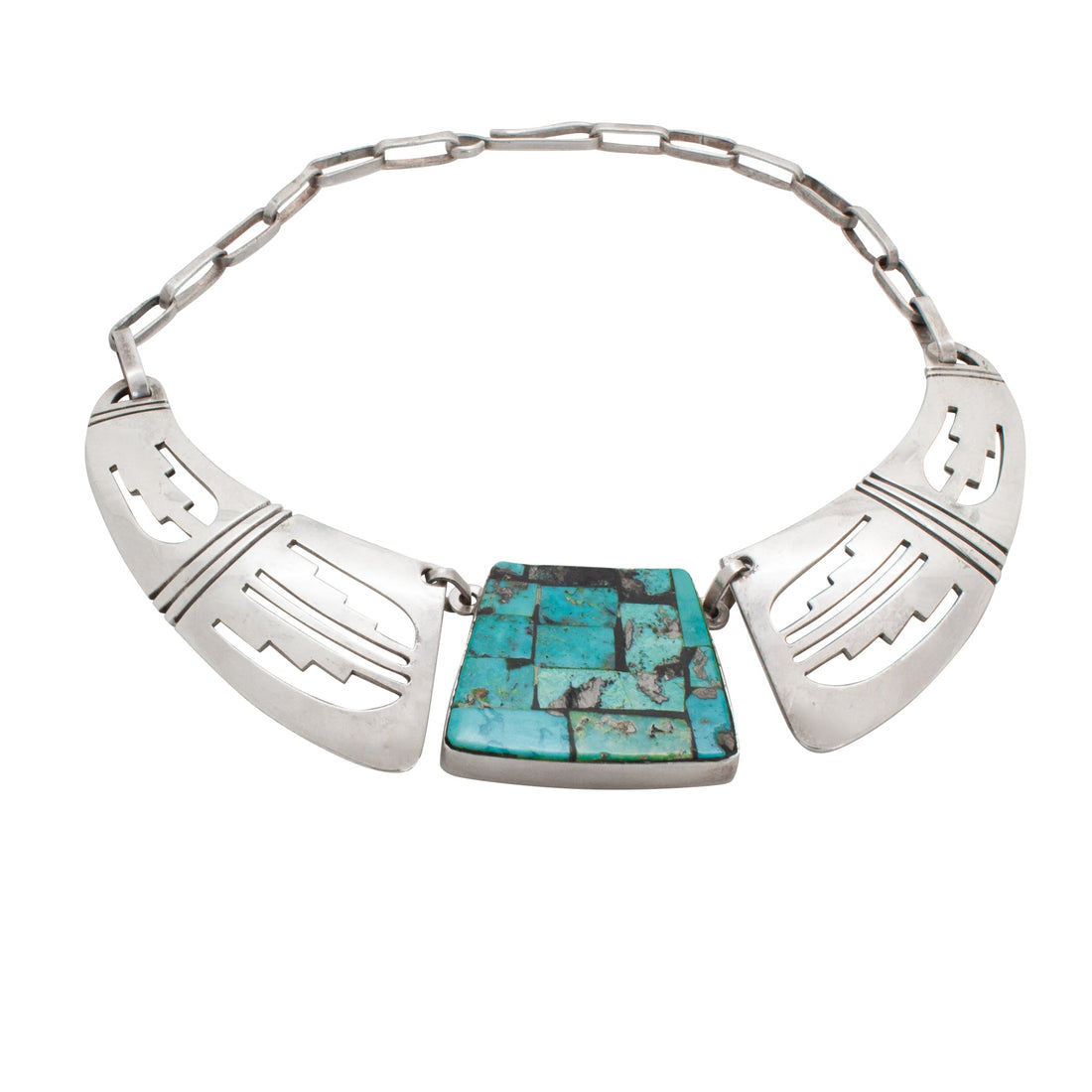Today I'm compelled to write a bit about Hopi jeweler Victor Coochwytewa. It's a tall order so here goes...
In 1925, English playwright and novelist William Somerset Maugham wrote in his book The Painted Veil, “I have an idea that the only thing which makes it possible to regard this world we live in without disgust is the beauty which now and then men create out of chaos. The pictures they paint, the music they compose, the books they write, and the lives they lead. Of all these, the richest in beauty is the beautiful life. That is the perfect work of art.”
Three years prior to Somerset Maugham penning these words, a Hopi baby was born in the remote village of Shungopavi, 2nd Mesa. That baby was Victor Coochwytewa, best known today as a gifted Hopi jeweler, but whose “beautiful life” of contribution and accomplishment in a variety of areas is surely one that Somerset Maugham would have considered “the perfect work of art.”
One of Victor Coochwytewa’s considerable accomplishments was serving his country with great honor in the chaos of the Second World War. Stationed in the South Pacific, Coochwytewa received three separate military honors, most notably an esteemed Purple Heart, the oldest military award still given.
After the war, Victor Coochwytewa returned to the Hopi Mesas in 1946 and joined the first Hopi silversmith training program for veterans that was formed under the G.I. Bill. Although he had previously studied silversmithing from Paul Saufkie in 1940, Victor trained for a full 18 months more under the “Veteran’s Classes” starting in February of 1947. Under the program, Victor’s classes, tools, and family living expenses were paid for. Victor Coochwytetwa learned under the tutelage of notable Hopi artists Paul Saufkie and Fred Kabotie.
Coochwytewa eventually developed an overlay jewelry technique of texturizing the oxidized base piece of metal to make it further stand out. This technique is still widely used in Hopi overlay jewelry today. In the 1970’s, Victor was also one of the first Hopi artists to create 14kt gold overlay jewelry. Through his masterful and innovative jewelry designs, Victor Coochwytewa blessed the world with beautiful, wearable artwork. As with his military service, he won many top awards at Santa Fe Indian Market, the Heard Museum Fair, and the Gallup Intertribal Ceremonial.
Still, Victor Coochwytewa’s life had a great deal more depth and breadth to it. Victor also worked a full time job at the highway department. Perhaps most important, however, were Victor Coochwytewa’s other duties. He was an adept dry farmer who grew a variety of crops including corn and watermelon. Coochwytewa was also a fervent Hopi religious leader. It’s significant that despite Victor’s acclaim, he remained a humble man, who believed in something much greater than himself. He once said that “nothing can be accomplished without prayer.”
When Victor Coochwytewa passed away in July of 2011 at the age of 89, he had used artistry, heroism, service, hard work, and humility to create a life as beautiful as the jewelry he's known for.
Here's a great vintage piece by Victor Coochwytewa that I happen to have right now.
Watch a quick video of some of Victor Coochwytewa's pieces to see them in action.



1 comment
I lived about 30 miles east of the Hopi Mesas, teaching reading at a BIA school. Often times I would go up to second Mesa to Victor’s shop. There I would do an all over all of the beautiful work that he had done. The best times were when I saved up enough money to purchase a beautiful piece of jewelry from him. he was always helpful and kind and showing me his work and explaining to be at the symbols. I will never forget Victor and his fabulous jewelry.